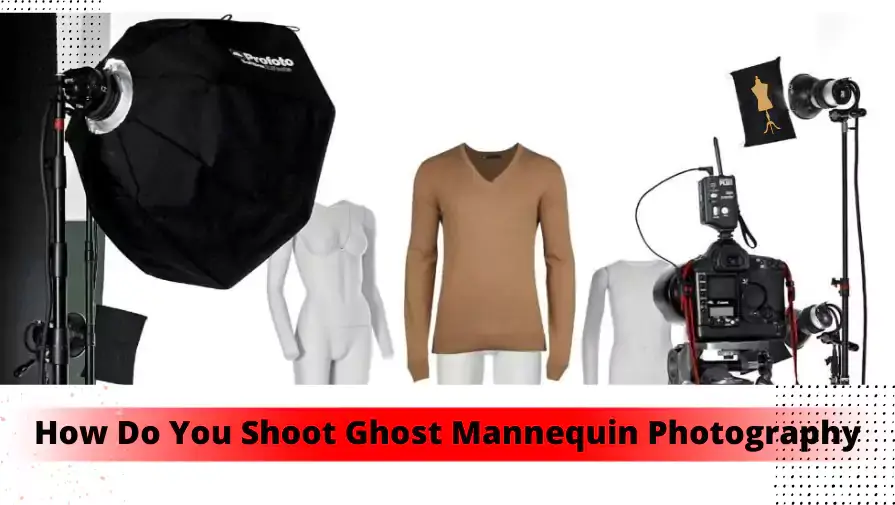Ghost mannequin photography, also known as invisible mannequin photography, is a powerful technique used by apparel businesses to showcase clothing products in a 3D, lifelike manner, without distracting elements like models or visible mannequins. This guide covers everything from setup and camera settings to post-production editing and final delivery. Ideal for eCommerce entrepreneurs, this technique improves visual appeal, enhances buyer trust, and increases conversions.
Why Ghost Mannequin Photography Matters
In the apparel business, product imagery plays a vital role in driving customer decisions. A flat, folded, or poorly-lit garment can misrepresent your brand and lower sales. Ghost mannequin photography eliminates distractions and presents your product as if worn, highlighting shape, fit, and design with professionalism.
Benefits
- 3D representation without a live model.
- Cost-effective compared to traditional model shoots.
- Professional, clean aesthetic.
- Higher conversion rates on eCommerce platforms.
Common Challenges
- Wrinkles or folds around the chest or collar.
- Distracting background colors.
- Uneven lighting.
- High ISO is causing loss of detail.
- Incorrect framing or poor angle.
These can be avoided with the right setup and post-production editing.
How to Shoot Ghost Mannequin Photography
Step 1: Shoot Multiple Product Angles

Capture separate shots of the front and back of your product. These images will be composited later. You can use the Nikon D3500 for high-quality output.
Tips
- Use a mannequin with removable neck/chest inserts.
- Capture a separate inner label shot using foam board for transparency effects.
Step 2: Lighting Setup

Proper lighting is essential to avoid harsh shadows and color issues.
Lighting Tips
- Use a white or gray backdrop.
- Steam garments beforehand to remove wrinkles.
- Use two softbox lights at 45-degree angles.
- Prefer natural light, but use continuous artificial lights for consistency.
Step 3: Positioning the Camera

Use a tripod for stability. Ensure the product is centered in the frame.
Recommended Camera Settings (Manual Mode)
- Shutter Speed: 1/125.
- ISO: 100 (lower for sharper results).
- Aperture: f/8.
- Flash Power: 3.0.
Distance Tip: Keep a balanced distance between the mannequin and the camera to avoid distortion.

Step 4: Use a Telephoto Lens

A telephoto zoom lens helps reduce distortion and captures fine details. It also creates a more compressed, flattering perspective.
Studio Checklist
- Spacious shooting area.
- Backdrop (white or relevant color).
- Studio lights.
- Tripod.
- Foam board (for neck joint).
Post-Production: Editing Ghost Mannequin Images in Photoshop
Step 1: Open Files & Create Layers
Open your front and back images in Photoshop. Create new layers for each component (e.g., front, back, neck insert).
Step 2: Use Selection Tools
Zoom in and use tools like:
- Quick Selection Tool
- Lasso Tool
- Magic Wand Tool
Select the product area clearly.
Step 3: Refine Edges & Mask
Go to Select > Refine Edge or Select and Mask. Apply a mask to isolate the product.
Step 4: Edit the Foam Board Image
Repeat the selection and masking process for the neck area shot taken with the foam board.
Step 5: Combine All Layers
Carefully align all parts of the product using layers. Ensure a natural blend between the front and back images.
Step 6: Remove Imperfections
Zoom in to clean unwanted parts using the Eraser Tool or Clone Stamp Tool.
Step 7: Add Natural Shadows
Add a soft shadow beneath the product using a drop shadow or manually with the Brush Tool. This adds realism to the final image.
Step 8: Export the Final Image
Save the final version in PNG (transparent background) or JPEG (white background), based on client requirements.
Pro Tips for Best Results
- Ensure consistent lighting across all shots
- Maintain the same camera height and angle.
- Use high-resolution settings for better detail.
- Batch edit using Photoshop actions for efficiency.
Final Few Words | Ghost Mannequin Photography
Ghost mannequin photography isn’t just a technique—it’s a business asset. With a proper shooting setup and professional post-production, your product photos can stand out in the competitive apparel market.
Want to simplify the process? Let Clipping World help with expert ghost mannequin photo editing. Try our Free Trial today!
FAQ | Ghost Mannequin Photography
It increases customer trust and can boost conversions by up to 35% through a clean and professional presentation.
It’s a mannequin removed during editing to make the product appear as if floating, showing a 3D effect.
A top-down shot of clothing laid flat. While useful for some items, it lacks the dimensionality of ghost mannequin photography.
Typically, plastic or fiberglass. Plastic is cheaper and commonly used in retail settings.
The cost varies depending on whether you’re doing it in-house or using a service. Outsourcing typically costs between $2 to $10 per image.
Yes, but DSLR or mirrorless cameras with manual settings provide better results in terms of sharpness and depth.
Use selection tools and layer masks to isolate the garment, then blend parts together with the background or neck insert image.
Model photography uses human models, while ghost mannequin shows the garment without distractions—ideal for clean, professional product images.
A studio helps with consistency and lighting, but with the right gear, you can achieve similar results in a home setup.

